![有限群的线性表示 [Linear Representations of Finite Groups]](https://pic.tinynews.org/10096494/80e66ed0-32ef-4080-b176-3087bdeabdac.jpg)

具体描述
内容简介
《有限群的线性表示》是一部非常经典的介绍有限群线性表示的教程,原版曾多次修订重印,作者是当今法国最突出的数学家之一,他对理论数学有全面的了解,尤以著述清晰、明了闻名。《有限群的线性表示》是他写的为数不多的教科书之一,原文是法文(1971年版),后出了德译本和英译本。《有限群的线性表示》是英译本的重印本。它篇幅不大,但深入浅出的介绍了有限群的线性表示,并给出了在量子化学等方面的应用,便于广大数学、物理、化学工作者初学时阅读和参考。内页插图
目录
Part ⅠRepresentations and Characters
1 Generalities on linear representations
1.1 Definitions
1.2 Basic examples
1.3 Submpmsentations
1.4 Irreducible representations
1.5 Tensor product of two representations
1.6 Symmetric square and alternating square
2 Character theory
2.1 The character of a representation
2.2 Schurs lemma; basic applications
2.3 0rthogonality relations for characters
2.4 Decomposition of the regular representation
2.5 Number of irreducible representations
2.6 Canonical decomposition of a representation
2.7 Explicit decomposition of a representation
3 Subgroups, products, induced representations
3.1 Abelian subgroups
3.2 Product of two groups
3.3 Induced representations
4 Compact groups
4.1 Compact groups
4.2 lnvariant measure on a compact group
4.3 Linear representations of compact groups
5 Examples
5.1 The cyclic Group
5.2 The group
5.3 The dihedral group
5.4 The group
5.5 The group
5.6 The group
5.7 The alternating group
5.8 The symmetric group
5.9 The group of the cube
Bibliography: Part Ⅰ
Part Ⅱ
Representations in Characteristic Zero
6 The group algebra
6.1 Representations and modules
6.2 Decomposition of C[G]
6.3 The center of C[G]
6.4 Basic properties of integers
6.5 lntegrality properties of characters. Applications
7 Induced representations; Mackeys criterion
7.1 Induction
7.2 The character of an induced representation;
the reciprocity formula
7.3 Restriction to subgroups
7.4 Mackeys irreducibility criterion
8 Examples of induced representations
8. l Normal subgroups; applications to the degrees of the
ineducible representations
8.2 Semidirect products by an ahelian group
8.3 A review of some classes of finite groups
8.4 Syiows theorem
8.5 Linear representations of superselvable groups
9 Artins theorem
9.1 The ring R(G)
9.2 Statement of Artins theorem
9.3 First proof
9.4 Second proof of (i) = (ii)
10 A theorem of Brauer
10.1 p-regular elements;p-elementary subgroups
10.2 Induced characters arising from p-elementary
subgroups
10.3 Construction of characters
10.4 Proof of theorems 18 and 18
10.5 Brauers theorem
11 Applications of Brauers theorem
11.1 Characterization of characters
11.2 A theorem of Frobenius
11.3 A converse to Brauers theorem
11.4 The spectrum of A R(G)
12 Rationality questions
12.1 The rings RK(G) and RK(G)
12.2 Schur indices
12.3 Realizability over cyclotomic fields
12.4 The rank of RK(G)
12.5 Generalization of Artins theorem
12.6 Generalization of Brauers theorem
12.7 Proof of theorem 28
13 Rationality questions: examples
13. I The field Q
13.2 The field R
Bibliography: Part Ⅱ
Part Ⅲ
Introduction to Brauer Theory
14 The groups RK(G), R(G), and Pk(G)
14.1 The rings RK(G) and R,(G)
14.2 The groups Pk(G) and P^(G)
14.3 Structure of Pk(G)
14.4 Structure of PA(G)
14.5 Dualities
14.6 Scalar extensions
15 The cde triangle
15.1 Definition of c: Pk(G) ——Rk(G)
15.2 Definition of d: Rs(G) —— Rk(G)
15.3 Definition of e: Pk(G) —— RK(G)
15.4 Basic properties of the cde triangle
15.5 Example: p-gmups
15.6 Example: p-groups
15.7 Example: products ofp-groups and p-groups
16 Theorems
16.1 Properties of the cde triangle
16.2 Characterization of the image of e
16.3 Characterization of projective A [G ]-modules
by their characters
16.4 Examples of projective A [G ]-modules: irreducible
representations of defect zero
17 Proofs
17. I Change of groups
17.2 Brauers theorem in the modular case
17.3 Proof of theorem 33
17.4 Proof of theorem 35
17.5 Proof of theorem 37
17.6 Proof of theorem 38
18 Modular characters
18.1 The modular character of a representation
18.2 Independence of modular characters
18.3 Reformulations
18.4 A section ford
18.5 Example: Modular characters of the symmetric group
18.6 Example: Modular characters of the alternating group
19 Application to Artin representations
19.1 Artin and Swan representations
19.2 Rationality of the Artin and Swan representations
19.3 An invariant
Appendix
Bibliography: Part Ⅲ
Index of notation
Index of terminology
前言/序言
This book consists of three parts, rather different in level and purpose:The first part was originally written for quantum chemists. It describes the correspondence, due to Frobenius, between linear representations and characters. This is a fundamental result, of constant use in mathematics as well as in quantum chemistry or physics. I have tried to give proofs as elementary as possible, using only the definition of a group and the rudiments of linear algebra.The examples (Chapter 5) have been chosen from those useful to chemists.
用户评价
这本书的封面设计简洁大气,书名“有限群的线性表示”也直击主题,让我立刻联想到代数中那些美妙的结构。我一直认为,好的数学书籍不仅仅是知识的堆砌,更是一种思想的启迪。我希望这本书能够深入浅出地阐述线性表示理论,让读者在理解概念的同时,也能感受到数学的逻辑之美。例如,我想了解如何从群的定义出发,自然而然地过渡到表示的概念,以及为什么“线性”这个词如此关键。特征标理论是我特别关注的部分,它在简化表示的研究中起着核心作用,我希望能看到书中对此有详尽的论述,包括特征标的性质、正交性关系等。此外,我非常期待书中能够包含一些关于表示分解的讨论,比如如何将一个表示分解成不可约表示的直和,这对于深入理解群的结构至关重要。这本书会不会涉及一些更高级的主题,比如诱导表示、或是在特定群(如对称群、循环群)上的具体表示理论,这些都让我非常感兴趣。
评分我拿到这本《有限群的线性表示》时,内心是充满期待的。一直以来,对抽象代数中的群论概念有着浓厚的兴趣,而线性表示理论无疑是连接抽象代数与更广泛数学分支(如几何、分析)的桥梁。这本书的名字本身就透露出一种严谨和深入的学术气息,让我预感到它会带领我走进一个充满结构和对称性的数学世界。我尤其希望它能清晰地解释诸如表示的定义、等价性、不可约表示、特征标理论等核心概念。这些理论在理解群的结构、分类以及在物理学(如量子力学中的对称性分析)等领域有着至关重要的应用。我期待书中能够提供丰富的例子,帮助我理解这些抽象概念的实际意义,比如对称群在晶体学中的应用,或是置换群在组合数学中的作用。同时,我也希望作者能循序渐进地引导读者,即使是对这个领域尚不熟悉的读者,也能通过这本书建立起扎实的理论基础。关于书的篇章安排、内容深度以及是否包含练习题和解答,我也充满好奇,希望能有充足的材料让我去探索和实践。
评分读到《有限群的线性表示》这本书名,我立刻被它所吸引。表示论是我一直想要深入学习的领域,因为它在很多数学分支中都扮演着关键角色。我希望这本书能够为我打开一扇理解群的“对称性”的新视角。我特别关心书中对“不可约表示”的讲解,这通常是表示论研究的基石。我希望能看到关于如何判断一个表示是否不可约,以及如何分解任意表示为不可约表示之和的清晰阐述。特征标的定义和性质也是我非常期待的内容,理解特征标如何编码了表示的信息,以及它们之间存在的美妙的正交关系,将是掌握表示论的关键。我同时也希望本书能介绍一些实际应用的例子,比如表示论在图论、编码理论、或者甚至在物理学和化学中的应用,这会让学习过程更有趣和更有动力。书中会不会对一些经典的群(例如,有限循环群、二面体群、或更一般的有限单群)的表示进行详细的分析?这一点我非常好奇。
评分拿到《有限群的线性表示》这本书,我的内心涌起了对数学世界深层奥秘的探索欲。线性表示理论,在我看来,是将抽象代数的语言转化为具体几何对象(向量空间中的线性变换)的桥梁,它允许我们用更直观的方式来研究群的结构。我非常期待这本书能够清晰地阐释表示的“忠实性”与“非忠实性”,以及如何通过“等价表示”来区分不同的表示。特征标理论无疑是表示论的重中之重,我希望书中能够详尽地介绍特征标的计算方法,以及它们所揭示的群的性质,比如是否是阿贝尔群。同时,我也对书中是否会介绍一些“诱导表示”和“共轭表示”等概念感到好奇,这些概念在表示论的研究中起着重要作用。如果书中能够包含一些关于如何构造不可约表示的算法,或者对一些特殊类型的有限群(如对称群)的表示进行具体的分析,那将是极大的收获。
评分这本书的书名,《有限群的线性表示》,本身就暗示着一种对抽象结构的深入探究。我一直着迷于数学中那些看似抽象,实则蕴含着深刻规律的概念,而表示论正是其中之一。我期望这本书能够系统地介绍有限群的线性表示理论,从最基本的定义出发,逐步深入到更复杂的概念。我特别希望看到关于表示的张量积、直积等构造性方法的介绍,这些操作在构建更复杂的表示以及理解表示之间的关系时非常有用。此外,我也对书中是否会涉及一些代数几何或拓扑学的观点来解释表示论有浓厚的兴趣,虽然这可能超出了基本的范围,但能够瞥见这些联系也会非常令人兴奋。我希望这本书能够帮助我建立起对表示论的整体认识,理解其在代数、几何等领域中的地位,并且能够为我今后进一步的学习打下坚实的基础。
评分当拓扑照例使用同胚下的不变量的术语来表述时,我们可以看到操作背后的基础思想。所涉及到的群在几乎所有情况下 - 除了李群 - 都是无穷维的,但其方法是一样。当然这只是说克莱因的影响启发。诸如H.S.M. Coxeter所写的书例行的采用爱尔兰根纲领的方法来帮助'定位'几何。用说教的术语,该纲领成了变换几何,这是一个有一些不良影响的好事,它比欧几里得的风格建立在更强的直觉上,但是也更难转换成为逻辑体系。
评分好书 清晰易读 值得推荐
评分gtm42好看又好用,还是gtm52的亲戚(●?∀?●)
评分经典图书,细细品读,很好的参考书
评分书很薄 但是内容很好哦
评分ggggggggggg%ggggy
评分serre的经典著作啊 买了读一读
评分为啥我觉得像盗版书
评分非常满意,五星
相关图书
本站所有内容均为互联网搜索引擎提供的公开搜索信息,本站不存储任何数据与内容,任何内容与数据均与本站无关,如有需要请联系相关搜索引擎包括但不限于百度,google,bing,sogou 等
© 2025 book.idnshop.cc All Rights Reserved. 静思书屋 版权所有

![现代数学物理方法(第2卷) [Methods of Modern Mathematical Physics II] pdf epub mobi 电子书 下载](https://pic.tinynews.org/10914333/549a7b59Nb9f42b6f.jpg)
![中外物理学精品书系·引进系列(29):等离子体光谱学导论(影印版) [Introduction to Plasma Spectroscopy] pdf epub mobi 电子书 下载](https://pic.tinynews.org/11300130/rBEhWVIUU-wIAAAAAAKp_QZeitkAACR6ACZr94AAqoV532.jpg)

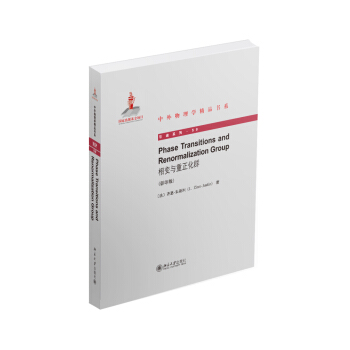


![李群论(英文版) [Theory of Lie Groups] pdf epub mobi 电子书 下载](https://pic.tinynews.org/11142975/rBEHZVDH9-YIAAAAAAb2zyD06vgAADO5gJXIjAABvbn900.jpg)


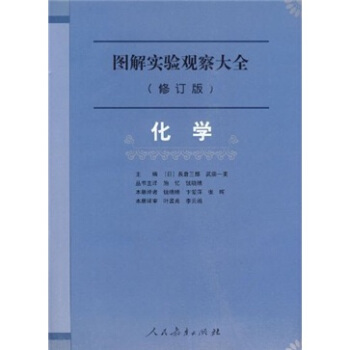
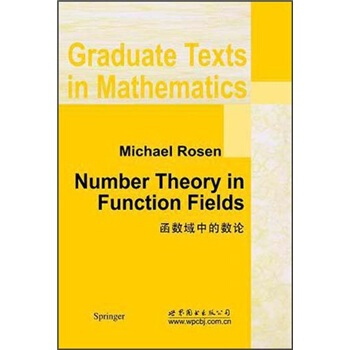

![物理学经典教材:统计力学(第2版) [Statistical Mechanics Made Simple 2nd Edition] pdf epub mobi 电子书 下载](https://pic.tinynews.org/11004216/rBEIC0_NW0EIAAAAAACQunZ2JpEAAAYvAJ-Zb8AAJDS740.jpg)
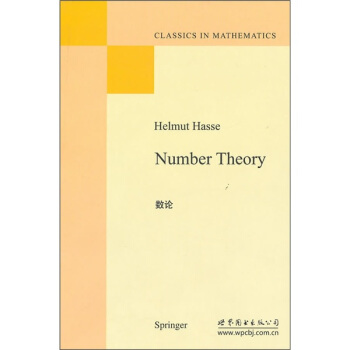
![Springer手册精选系列·晶体生长手册(第1册):晶体生长及缺陷形成概论(影印版) [Springer Handbook Crystal Growth] pdf epub mobi 电子书 下载](https://pic.tinynews.org/11179560/rBEQWVE0c8cIAAAAAAcyKDz8ZQwAABcEgFCW7YABzJA210.jpg)
![流形上的层(英文版) [Sheaves on Manifolds] pdf epub mobi 电子书 下载](https://pic.tinynews.org/11419299/rBEhVVMfqukIAAAAAAIQYlzpMT8AAKAVgE8hbIAAhB6608.jpg)
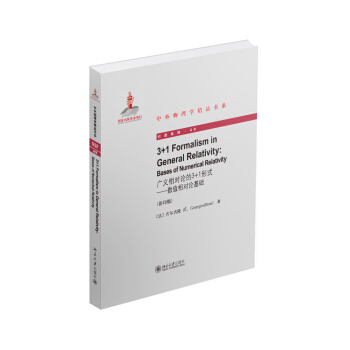

![群与对称 [Groups and Symmetry] pdf epub mobi 电子书 下载](https://pic.tinynews.org/10888929/d6dbbe8e-85ef-4413-ab2a-c569c49fb4fa.jpg)
